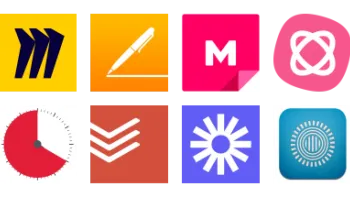Take a look inside 5 images
grow grammar
Pros: Four levels take kids' sentences from simple to complex.
Cons: Explanations for each part of speech are brief, so students may need more direct instruction.
Bottom Line: Sleek visual format makes grammar more tactile and concrete.
Teachers could incorporate grow grammar into direct grammar instruction, using it as practice for kids to identify parts of speech in the challenge mode and then add it into a writer's workshop by having students create their own sentences. Some explanation is presented in the app, but the definitions will serve as more of a reminder and example than full instruction on the parts of speech and their functions in sentences. There are no user accounts, and student sentences and progress aren't saved.
Students can work in two modes: create and challenge. In create, they create their own original sentences, choosing the sentence structure and selecting words for each part of speech. In challenge mode, the sentences are given and students identify which word goes with each part of speech. Kids can advance through four levels or jump around between levels. Level 1 includes articles, nouns, pronouns, and verbs in present tense. Level 2 adds adjectives, direct objects, and past and future tenses. Level 3 includes prepositional phrases as part of a noun phrase and verb phrase, and Level 4 incorporates adverbs and progressive tense verbs.
The diagramming tool grow grammar elegantly combines a little grammar-in-isolation practice with grammar in the context of writing to give students a well-rounded understanding of sentence structures and parts of speech. Since kids can get as silly as they want with their creative sentences, they'll have fun, and the challenge of advancing to the next level once one concept has been mastered will keep them engaged. Teachers may prefer a little more practice at each level, but the number of sentences offered is reasonable for students to easily work through in a class period. This fresh, visually appealing approach to grammar is reminiscent of diagramming without so many rules. It brings a bit of tactile learning to grammar that makes the logic of grammar easier to grasp.













